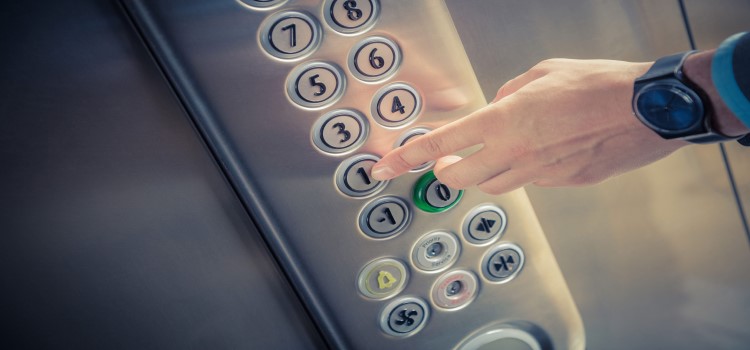Role of Leading Companies in Shaping the Latest Trends in Elevator Market
Introduction
In the ever-evolving landscapes of modern cities and the towering structures of urban environments, elevators stand as silent sentinels. They are ferrying people swiftly and efficiently from one floor to another. The humble elevator is undergoing a remarkable transformation, evolving beyond its functional role and into a realm of personalized experiences, energy efficiency, and cutting-edge technology.
According to Next Move Strategy Consulting, the elevator market size was valued at USD 82.07 billion in 2023, and is predicted to reach USD 137.57 billion by 2030, with a CAGR of 6.6% from 2024 to 2030. In this era of innovation, elevator manufacturers are pushing the boundaries of what was once considered mundane. They introduced smart elevators that cater to individual preferences, enhance accessibility, and minimize environmental impact. Let’s delve into some of the advancements that fuel the elevator industry.
Smart Elevators: By integrating advanced technology, Smart Elevators have revolutionized the vertical transportation industry. They enhance efficiency, safety, and passenger experience. Equipped with sensors, cameras, and connectivity features, smart elevators gather real-time data on usage patterns, traffic flow, and performance metrics. This data is then analyzed to optimize elevator schedules, reduce waiting times, and improve energy efficiency.
One notable example of innovation in the smart elevator market is the launch of Otis Worldwide Corporation's next-generation smart elevator system, the Otis Gen360 digital elevator. This cutting-edge system and the introduction of the 515NPE public escalator signifies an advancement in elevating the passenger experience and creating a safer and more connected urban journey.
The Otis Gen360 digital elevator incorporates state-of-the-art technology to provide passengers with a seamless and efficient transportation experience. By leveraging data analytics and connectivity features, the Gen360 system optimizes elevator operations, reducing wait times and improving energy efficiency. Additionally, the elevator has advanced safety features to ensure passenger security and peace of mind.
In addition to the Gen360 digital elevator, Otis introduced its futuristic Smart Cab elevator concept. This elevator concept features immersive displays, novel features, and visionary aesthetics. It offers passengers an advanced glimpse into the future of the elevator riding experience.
With its focus on technology-driven solutions and passenger-centric design, Otis is shaping the future of vertical transportation. The company's smart elevator systems improve efficiency and safety and elevate the overall passenger experience, transforming the way people move within urban environments.
IoT Integration: The incorporation of the Internet of Things (IoT) has accompanied a new era of connectivity and intelligence in the elevator industry. By enabling seamless communication between elevator systems and building management platforms, the IoT integration has unlocked many benefits for building operators and managers.
One key advantage of IoT integration is the ability to facilitate remote monitoring, predictive maintenance, and real-time diagnostics of elevator systems. Through continuous data collection and analysis, IoT-enabled elevators provide valuable insights into their performance. This proactive approach to maintenance helps prevent breakdowns, minimize downtime, and ensure uninterrupted vertical transportation for building occupants.
TK Elevator, a leading player in the elevator industry, has been at the forefront of driving digitalization through its innovative solutions. One such solution is MAX, TK Elevator's industry-leading cloud-based IoT platform. The platform has been introduced to the Chinese market. MAX harnesses the power of real-time data from connected elevators, escalators, and moving walks to deliver optimal customer service for building operators and managers.
With MAX, building operators and managers gain access to a wealth of information about the functionality and performance of their elevator systems. They are provided with immediate updates on the status of elevators and escalators, enabling prompt resolution of any emerging issues. Moreover, MAX leverages predictive maintenance algorithms to anticipate maintenance needs and schedule service interventions proactively. This, in turn, minimizes downtime and maximizes system uptime.
One of MAX's key advantages is its seamless integration with digital partner products. This allows building operators and managers to manage their entire building infrastructure through a single and comprehensive platform. By consolidating data and management tools into one centralized system, MAX simplifies overseeing building operations, improving efficiency, and streamlining workflows.
Energy Efficiency: The elevator market emphasizes energy efficiency to reduce power consumption and minimize environmental impact. Advanced technologies such as regenerative drive systems capture and convert energy produced during braking into usable electricity, which is then reintegrated into the building's power supply. Additionally, the integration of LED lighting, variable frequency drives, and energy-efficient motors further enhances energy savings. Elevator manufacturers are also exploring innovative designs such as double-decker elevators and utilizing lightweight materials to improve energy efficiency while maintaining performance standards.
An example of this innovation is NIBAV Home Lifts, an Australia-based company. It recently introduced Next Generation green home lifts, known as The NIBAV Series II. These elevators operate on single-phase power and consume only 3.7 kVA of power while ascending. Remarkably, they consume zero power during descent, qualifying them as a green elevator solution. Furthermore, the NIBAV Series II is powered by air, utilizing one of the most abundant resources globally. This design eliminates the need for oil or lubrication, contributing to its environmentally friendly operation.
Destination Control Systems: Destination control systems revolutionize elevator traffic management by dynamically assigning passengers to specific elevators based on their destination floors. By analyzing real-time passenger demand, these systems effectively decrease waiting times, alleviate congestion, and enhance overall operational efficiency. Passengers convey their desired floor via a touchscreen or keypad, allowing the system to direct them to the most suitable elevator. This, in turn, streamlines boarding and maximizes elevator usage.
In the Asia-Pacific region, TK Elevator introduced a new generation of Destination Control kiosks known as AGILE. Beyond making a strong initial impression on passengers, these AGILE kiosks offer customization options, allowing tailored graphics and messages through the Design Center. This customization benefits building tenants and enhances the overall building experience.
The AGILE kiosks are optimized to work seamlessly with TK Elevator’s innovative Destination Selection Control (DSC) system. Whether installed in new projects or as part of modernizing older buildings through replacements or updates to existing elevator systems, the AGILE kiosks and DSC system significantly improve elevator performance. Updating elevator control systems with AGILE reduces time-to-destination by 25% and increases system traffic capacity by 30%. This, in turn, effectively reduces passenger queues during peak hours.
Personalized User Experience: The elevator industry is embracing advancements to deliver a customized user experience tailored to individual preferences and requirements. Smart elevators can identify occupants through various means, such as key cards, mobile devices, or biometric identifiers. This will lead to customized settings such as preferred floor destinations, lighting levels, and climate control.
Furthermore, personalized user interfaces and voice-activated controls enhance convenience and accessibility for all passengers, including those with disabilities or specific needs. An example of such innovation is Hitachi's touchless operating panel, launched in September 2022. This panel eliminates physical floor buttons and allows users to select their desired floor by effortlessly gliding their finger over the floor depicted on the monitor of the touchless operating panel. This intuitive interface enhances user experience while promoting hygiene and ease of use.
Role of Companies in Shaping these Trend
The role of top companies such as Otis, Kone Corporation, and TK Elevator in shaping trends in the elevator and escalator industry is significant. Within the New Equipment segment, Otis designs, produces, sells, and installs an extensive array of passenger and freight elevators, escalators, and moving walkways tailored for residential, commercial, and infrastructure ventures. In 2022, the New Equipment segment had sales of USD 5.9 billion and an operating profit of USD 358 million.
In 2022, the New Equipment sales in China represented approximately one-third of the new equipment net sales. Furthermore, China represented over half of the global New Equipment unit volume. The company developed a range of elevator and escalator solutions to meet the varying needs and objectives of diverse customers. These companies hold the dominant market share and revenue. Furthermore, they are innovators that drive technological advancements and sustainability initiatives within the industry. Here's how they are shaping the trends:
Innovation and Technology Adoption: Companies such as Otis and Kone Corporation are at the forefront of introducing cutting-edge technologies in elevator and escalator solutions. For example, Otis developed the Gen3 and Gen360 digital elevator platforms, integrating IoT connectivity through their Otis ONE platform. This allows real-time monitoring of equipment health and performance. This, in turn, enables proactive maintenance and enhances safety for passengers. On the other hand, Kone Corporation emphasizes energy efficiency and sustainability in its offerings, with features such as carbon-neutral elevators and escalators and certifications for cybersecurity and sustainability.
Sustainable Practices: Elevator and escalator companies increasingly focus on sustainability initiatives with the global push towards environmental responsibility. Kone Corporation, for instance, introduced carbon-neutral elevators and escalators, showcasing a commitment to reducing carbon emissions throughout the lifecycle of their products. By offering sustainable options, these companies influence the industry toward more environmentally friendly practices.
Customer-Centric Solutions: Otis and Kone Corporation emphasize meeting their customers' diverse needs through tailored solutions. With its Gen2 family of elevators, Otis demonstrates a commitment to providing solutions that address the specific requirements of residential, commercial, and infrastructure projects. Focusing on energy efficiency and safety, Otis is dedicated to enhancing the vertical transportation experience across various sectors.
On the other hand, Kone Corporation emphasizes energy efficiency and safety through its newer digital platforms. With a focus on innovation and technology, Kone strives to meet the unique needs of residential, commercial, and infrastructure projects. It offers cutting-edge solutions for vertical transportation.
Industry Standards and Certifications: Companies, including Kone Corporation, set industry standards by obtaining certifications such as ISO 27001 for cybersecurity and ISO 25745 for energy efficiency. By upholding these standards, they guarantee the quality, safety, and sustainability of their products and services, setting a precedent for other companies to emulate.
Thus, these top companies in the elevator and escalator industry play a pivotal role in shaping trends through innovation, sustainability initiatives, customer-centric approaches, and adherence to industry standards. As market leaders, their actions and strategies influence not only their competitors but also the direction of the industry as a whole.
CONCLUSION
In conclusion, it becomes evident that the industry stands at the precipice of a transformative era in vertical transportation. From tailored user experiences to eco-friendly designs and advanced control systems, elevators are poised to transcend their traditional role and emerge as integral components of futuristic urban landscapes. As cities evolve and architectural marvels redefine skylines, the demand for smarter, sustainable, and user-centric elevator solutions will only intensify. Embracing these innovations enhances efficiency & convenience and fosters a more environmentally conscious and inclusive urban environment.
About the Author
 Sikha Haritwal is a researcher with more than 3 years of experience. She has been keeping a close eye on several industry verticals, including Banking, Financial Services, and Insurance (BFSI), personal care products, and consumer electronics. She has avid interest in writing news articles and hopes to use blog as a platform to share her knowledge with others. When she is not following industry updates and trends, she spends her time reading, writing poetry, cooking, and photography. The author can be reached at sikha.haritwal@nextmsc.com.
Sikha Haritwal is a researcher with more than 3 years of experience. She has been keeping a close eye on several industry verticals, including Banking, Financial Services, and Insurance (BFSI), personal care products, and consumer electronics. She has avid interest in writing news articles and hopes to use blog as a platform to share her knowledge with others. When she is not following industry updates and trends, she spends her time reading, writing poetry, cooking, and photography. The author can be reached at sikha.haritwal@nextmsc.com.


Leave a Reply